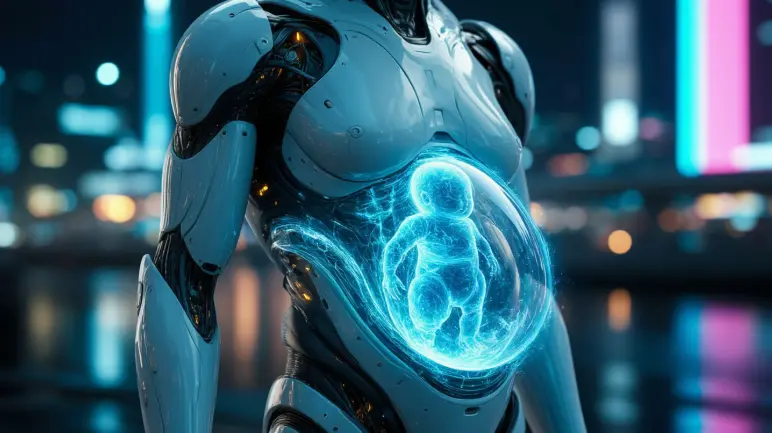Calls for Ukraine
Calls for Europe
Calls for USA

The first prototype of this robot is expected to be released in 2026 at a price of about 100,000 Yuan (about 14,000 dollars).
China is completing the development of a surrogate mother robot, created in the image and likeness of a human being and equipped with an artificial womb capable of carrying a pregnancy for up to 10 months.
China is completing the development of a surrogate mother robot, created in the image and likeness of a human and equipped with an artificial womb capable of carrying a pregnancy for 10 lunar months and giving birth to children.
In mid-August, Chosun Biz reported that a research team at Caiwa Robot Company is developing the world’s first robot for surrogate motherhood.
This robot is humanoid in shape and capable of carrying a 10-month pregnancy and giving birth like a real woman.
The main technology is an artificial womb.
According to the Chinese science and technology news agency Kuai Ke Zhi, Dr. Zhang Qifeng, currently working at Nanyang Technological University (Singapore), is the chief person in charge of this project.
In an interview, Dr. Zhang stated that the new robot is not just an incubator for embryos, but a humanoid biological system that can completely mimic the process from fertilization to childbirth.
The technology is based on an artificial womb, where the embryo is grown in amniotic fluid and supplied with nutrients through a system of tubes.
Dr. Zhang said that the technology has reached the final stage and now only needs to be integrated into the robot’s abdominal cavity to begin testing with a real pregnancy.
In addition, Dr. Zhang also said that the artificial womb model has shown positive results in animal testing.
According to Nature Communications magazine, in 2017, scientists at Children’s Hospital of Philadelphia (USA) successfully grew a premature lamb (equivalent to a 23-week human fetus) in a device called a “biopack” — a plastic bag containing artificial amniotic fluid.
After four weeks, the lambs were developing normally and had grown wool.
However, according to Mr. Zhang, this device currently serves only as an incubator for premature fetuses, while the robot he and his colleagues have developed is designed to recreate the entire pregnancy process from the very beginning.
However, he has not yet disclosed details on how fertilization and embryo implantation into the artificial uterus will be carried out.
“Storm” on Chinese social media
As soon as this information was made public, the keyword “The world’s first pregnant robot will be launched within the next year” quickly rose to the top of the search rankings on the social media platform Weibo.
In addition, a video interview with the research team posted on the Douyin platform also attracted many users, who left about 4,000 comments, indicating great public interest.
Many people expressed deep concern about this research, saying that it is inhumane to allow a child to be born without any connection to the mother, and questioning the origin of the egg and sperm in the process.
However, many support this development. Many believe that if the cost of the robot is equivalent to only half of the annual income, then owning one is quite justified. Some also believe that this is a step towards freeing women from the burden of pregnancy and childbirth.
In particular, many commentators see this as a new ray of hope for infertile couples. Some users wrote that their numerous attempts at artificial insemination had been unsuccessful and hoped that this technology would give them the opportunity to become parents.
Please rate the work of MedTour
